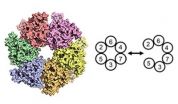(Press-News.org) In the United States, natural-gas production from shale rock has increased by more than 700 percent since 2007. Yet scientists still do not fully understand the industry's effects on nature and wildlife, according to a report in the journal Frontiers in Ecology and the Environment.
As gas extraction continues to vastly outpace scientific examination, a team of eight conservation biologists from various organizations and institutions, including Princeton University, concluded that determining the environmental impact of gas-drilling sites — such as chemical contamination from spills, well-casing failures and other accidents — must be a top research priority.
With shale-gas production projected to surge during the next 30 years, the authors call on scientists, industry representatives and policymakers to cooperate on determining — and minimizing — the damage inflicted on the natural world by gas operations such as hydraulic fracturing, or "fracking." A major environmental concern, hydraulic fracturing releases natural gas from shale by breaking the rock up with a high-pressure blend of water, sand and other chemicals, which can include carcinogens and radioactive substances.
"We can't let shale development outpace our understanding of its environmental impacts," said co-author Morgan Tingley, a postdoctoral research associate in the Program in Science, Technology and Environmental Policy in Princeton's Woodrow Wilson School of Public and International Affairs.
"The past has taught us that environmental impacts of large-scale development and resource extraction, whether coal plants, large dams or biofuel monocultures, are more than the sum of their parts," Tingley said.
The researchers found that there are significant "knowledge gaps" when it comes to direct and quantifiable evidence of how the natural world responds to shale-gas operations. A major impediment to research has been the lack of accessible and reliable information on spills, wastewater disposal and the composition of fracturing fluids. Of the 24 American states with active shale-gas reservoirs, only five — Pennsylvania, Colorado, New Mexico, Wyoming and Texas — maintain public records of spills and accidents, the researchers report.
"The Pennsylvania Department of Environmental Protection's website is one of the best sources of publicly available information on shale-gas spills and accidents in the nation. Even so, gas companies failed to report more than one-third of spills in the last year," said first author Sara Souther, a postdoctoral research associate at the University of Wisconsin-Madison.
"How many more unreported spills occurred, but were not detected during well inspections?" Souther asked. "We need accurate data on the release of fracturing chemicals into the environment before we can understand impacts to plants and animals."
One of the greatest threats to animal and plant life identified in the study is the impact of rapid and widespread shale development, which has disproportionately affected rural and natural areas. A single gas well results in the clearance of 3.7 to 7.6 acres (1.5 to 3.1 hectares) of vegetation, and each well contributes to a collective mass of air, water, noise and light pollution that has or can interfere with wild animal health, habitats and reproduction, the researchers report.
"If you look down on a heavily 'fracked' landscape, you see a web of well pads, access roads and pipelines that create islands out of what was, in some cases, contiguous habitat," Souther said. "What are the combined effects of numerous wells and their supporting infrastructure on wide-ranging or sensitive species, like the pronghorn antelope or the hellbender salamander?"
The chemical makeup of fracturing fluid and wastewater is often unknown. The authors reviewed chemical-disclosure statements for 150 wells in three of the top gas-producing states and found that an average of two out of every three wells were fractured with at least one undisclosed chemical. The exact effect of fracturing fluid on natural water systems as well as drinking water supplies remains unclear even though improper wastewater disposal and pollution-prevention measures are among the top state-recorded violations at drilling sites, the researchers found.
"Some of the wells in the chemical disclosure registry were fractured with fluid containing 20 or more undisclosed chemicals," said senior author Kimberly Terrell, a researcher at the Smithsonian Conservation Biology Institute. "This is an arbitrary and inconsistent standard of chemical disclosure."
INFORMATION:
The paper's co-authors also include researchers from the University of Bucharest in Romania, Colorado State University, the University of Washington, and the Society for Conservation Biology. The work was supported by the David H. Smith Fellowship program administered by the Society for Conservation Biology and funded by the Cedar Tree Foundation; and by a Policy Fellowship from the Wilburforce Foundation to the Society for Conservation Biology.
Souther, Sara, Morgan W. Tingley, Viorel D. Popescu, David T.S. Hyman, Maureen E. Ryan, Tabitha A. Graves, Brett Hartl, Kimberly Terrell. 2014. Biotic impacts of energy development from shale: research priorities and knowledge gaps. Frontiers in Ecology and the Environment. Article published online Aug. 1, 2014. DOI: 10.1890/130324.
'Fracking' in the dark: Biological fallout of shale-gas production still largely unknown
2014-08-01
ELSE PRESS RELEASES FROM THIS DATE:
For bats and dolphins, hearing gene prestin adapted for echolocation
2014-08-01
A little over a decade ago, prestin was found to be a key gene responsible for hearing in mammals. Prestin makes a protein found in the hair cells of the inner ear that contracts and expands rapidly to transmit signals that help the cochlea, like an antique phonograph horn, amplify sound waves to make hearing more sensitivity.
Now, in a new study published in the advanced online edition of Molecular Biology and Evolution, Peng Shi, et al., have shown that prestin has also independently evolved to play a critical role in the ultrasonic hearing range of animal sonar, ...
Scientist underlines threat of inevitable 'solar super-storms'
2014-08-01
In this month's issue of Physics World, Ashley Dale from the University of Bristol warns of the "catastrophic" and "long-lasting" impacts of "solar super-storms" and the dangers we face if the threat continues to go unnoticed.
Dale, who was a member of an international task force – dubbed SolarMAX – set up to identify the risks of a solar storm and how its impact could be minimized, explains how it is only a matter of time before an exceptionally violent solar storm is propelled towards Earth. Such a storm would wreak havoc with our communication systems and power supplies, ...
Harmful drinkers would be affected 200 times more than low risk drinkers with an MUP
2014-08-01
A new study of liver patients by the University of Southampton shows that a Minimum Unit Price (MUP) policy for alcohol is exquisitely targeted towards the heaviest drinkers with cirrhosis.
Published today in Clinical Medicine, the peer review journal for the Royal College of Physicians, the researchers studied the amount and type of alcohol drunk by 404 liver patients, and also asked patients how much they paid for alcohol. They found that patients with alcohol related cirrhosis were drinking on average the equivalent of four bottles of vodka each week, and were buying ...
Depressive symptoms and pain may affect health outcomes in dialysis patients
2014-08-01
Washington, DC (July 31, 2014) — Depressive symptoms and pain in patients on dialysis may have serious negative consequences for patients' health and increase the need for costly medical services, according to a study appearing in an upcoming issue of the Clinical Journal of the American Society of Nephrology (CJASN). The findings indicate that studies should evaluate the potential of anti-depressant and analgesic therapies to improve patient outcomes and reduce costs.
Depressive symptoms and pain are common in kidney failure patients receiving chronic hemodialysis, but ...
Molecular gate that could keep cancer cells locked up
2014-08-01
In a study published today in Genes & Development, Dr Christian Speck from the MRC Clinical Sciences Centre's DNA Replication group, in collaboration with Brookhaven National Laboratory (BNL), New York, reveal the intricate mechanisms involved in the enzyme that governs DNA duplication during cell division. By developing a sophisticated system using synthetic, chemical and structural biology approaches, the study reveals how a key enzyme involved in duplicating genetic information embraces DNA through a gated system, which opens up at precise positions allowing for a highly ...
SwRI-led team's research shows giant asteroids battered early Earth
2014-08-01
San Antonio — July 31, 2014 — A new terrestrial bombardment model developed by an international group of scientists led by Southwest Research Institute (SwRI) indicates that Earth's surface was heavily reprocessed — or melted, mixed and buried — as a result of giant asteroid impacts more than four billion years ago.
The model, calibrated using existing lunar and terrestrial data, sheds light on the role asteroid collisions played in the geological evolution of the uppermost layers of Earth during the geologic eon call the "Hadean," or first geologic eon, approximately ...
Blood and saliva tests help predict return of HPV-linked oral cancers
2014-07-31
Physicians at Johns Hopkins have developed blood and saliva tests that help accurately predict recurrences of HPV-linked oral cancers in a substantial number of patients. The tests screen for DNA fragments of the human papillomavirus (HPV) shed from cancer cells lingering in the mouth or other parts of the body. A description of the development is published in the July 31 issue of JAMA Otolaryngology – Head & Neck Surgery.
"There is a window of opportunity in the year after initial therapy to take an aggressive approach to spotting recurrences and intensively addressing ...
Study of twins discovers gene mutation linked to short sleep duration
2014-07-31
DARIEN, IL – Researchers who studied 100 twin pairs have identified a gene mutation that may allow the carrier to function normally on less than six hours of sleep per night. The genetic variant also appears to provide greater resistance to the effects of sleep deprivation.
Results show that a participant with p.Tyr362His – a variant of the BHLHE41 gene – had an average nightly sleep duration of only five hours, which was more than one hour shorter than the non-carrier twin, who slept for about six hours and five minutes per night. The twin with the gene mutation also ...
Sustained efficacy, immunogenicity, and safety for GlaxoSmithKline's HPV vaccine
2014-07-31
A long-term follow-up study (HPV-023; NCT00518336) shows the sustained efficacy, immunogenicity and safety of GlaxoSmithKline's human papilloma virus (HPV) vaccine Cervarix. Women vaccinated with the HPV-16/18 AS04-adjuvanted vaccine were followed for more than nine years, and vaccine efficacy (VE) against incident infection was 100%. This is the longest follow-up report for a licensed HPV vaccine. Visit https://www.landesbioscience.com/journals/vaccines/article/29532/ for the full paper.
HPV and vaccination
Persistent infection with HPV has been clearly established ...
Algorithm reduces use of CT scans when diagnosing children with appendicitis
2014-07-31
ROCHESTER, Minn. — Implementation of an algorithm aimed to diagnose pediatric patients with suspected appendicitis reduces the utilization of computed tomography (CT) scans, without affecting diagnostic accuracy, Mayo Clinic Children's Center researchers have found. The study was recently published in the journal Surgery.
Acute appendicitis is the most common cause of acute abdominal pain in children. Appendicitis occurs when the appendix becomes inflamed and filled with pus. CT scans are often used to diagnose acute appendicitis because they are accurate, widely available ...


